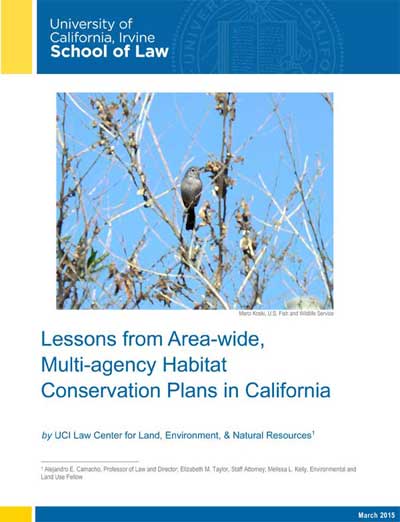| The Center for Land, Environment, and
Natural Resources presents |
| | | 
How can the Endangered Species Act and other conservation programs cope with population and development pressures, the current biodiversity crisis, and climate change? Over 30 years ago, public and private partners in California pioneered the concept of inter-governmental habitat conservation planning in an attempt to balance the competing demands of developing desirable land and the need to provide sufficient habitat to protect species at risk. The evolution of this early innovation in governance provides valuable insights for the many ensuing and emerging federal and state initiatives seeking to promote landscape-level inter-agency planning.
This report explores the key challenges of promoting effective and comprehensive conservation governance through the experience of area-wide, multi-agency habitat conservation plans, with a particular focus in California. Based on interviews with seasoned practitioners and intensive collaborative dialogues co-convened with the Center for Collaboration in Governance as part of CLEANR’s innovative Workshop Roundtable series, the report identifies the tradeoffs between plan scale, depth, duration, cost, certainty, and efficacy. However, close attention to these underlying tradeoffs—along with recognition of when appropriate conditions exist and careful institutional design choices—can maximize the likelihood of effective, multi-jurisdictional, large-scale, and adaptive conservation planning.
The full report is available here »

Learn more about CLEANR
If you would like to be added to CLEANR’s mailing list,
please email aduong@law.uci.edu | |
| |
| |
|